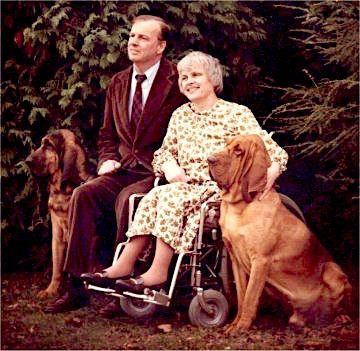

James Ryan
December 24, 1934 — September 28, 2021
North Austin Location
James Leo Ryan
December 24, 1934 —September 28, 2021
Born the day before Christmas in 1934, James Leo Ryan—or Jim as family and friends called him—passed away after a long illness on 28 September 2021 in Austin, Texas. Jim’s final wish was granted when his ashes were interred together with the ashes of his late wife and love of his life, Mary Clare Carter Ryan, in the Carter family plot in Saginaw, Michigan’s Oakwood Cemetery on 10 December 2021. Mary Clare had predeceased Jim, also after a long illness, back in 2004.
Jim’s nephew, Reverend Dennis L. Ryan, III, of St. Francis of Assisi Anglican Church in Estes Park, Colorado, conducted the very special gravesite service. Mary Clare’s niece and nephew, John and Katharine Teeter, of Ann Arbor and Marquette, Michigan, respectively, made all the arrangements to perfection—and with ever so much love and kindness. Jim’s sister, Latifah Jessica Irene Taormina and her partner, Reynold Weissinger of California, also attended, and Latifah led the others in singing some of Jim’s favorite Christmas carols.
Beloved son of the late Admiral Denis Leo Ryan and Sarah Bryson Ryan, Jim is survived by two sisters, Elizabeth Ryan Adams of Cleveland, Ohio and Latifah Taormina of Laguna Woods, California. Jim’s other brothers and sisters, Dennis L Ryan, Jr., Sally McBee Ryan, and Timothy Ryan had all predeceased Jim. Like Jim as well as his father and grandfather, Reverend Ryan also served in the Navy. Denis and Dennis III were both Annapolis grads.
A pioneer in developing A Programming Language (APL) that vastly expanded the usability of mainframe computers, Jim Ryan—was a key member of the team that developed the Analogic APL Machine.
Writes Dennis Allison, lecturer at Stanford University and founding member of The People’s Computer Company:
“A few historical implementations of APL are very interesting. The Burroughs 220 version by Larry Breed was the defining factor of what became the APL environment. Jim Ryan's APL for the Burroughs 6500 was nothing short of amazing and pioneered many of the performance enhancement mechanisms now used in production optimizing compilers. John Walters (ex-IBM) built an APL compiler for HP which compiled very good code but retained the interactive character of APL.”
Jim himself wrote of the development of APL:
“The APL Machine was actually conceived at a New Years’ party where I was introduced by Sandy Friedman, my colleague at a small Boston based company called Planning Economics, to a John Dobbs who was at that time with Analogic and was interested in making the array processors that Analogic manufactured easy to program. We introduced John to APL and suggested that it would be a much easier vehicle for programming their array processors. The result of this New Years’ gathering was the birth of the APL Machine project (named in respect of the paper written by Phil Abrams).
“. . . The design of the APL was somewhat unusual in that the disk contained the universe of all APL objects and a workspace itself was merely a directory of which of those objects were relevant to that workspace.
One of the byproducts of the project was the development of a multi-window interface to the IBM PC which allowed concurrent varying sized windows to dynamically display the current screens of up to 10 tasks. And this was on a PC before hard disks were available! “
Jim subsequently designed and implemented database management applications especially tailored to the needs of Mobil Technology as well as other petroleum researchers, bringing them the ability to make spontaneous queries quickly and easily across a number of related data sets. He also designed and implemented scientific graphics presentation packages for internal corporate use as well as applications for the interrogation, maintenance, and presentation of petroleum research data.
In many ways, his brain seemed wired for all that from the beginning. When he was barely eight years old, he gave his mother a detailed design for a car that would “run on air” and asked her to keep the design in a safe place. About a year later, he told her to destroy the paper as “it wouldn’t work.” Of course, his Mother didn’t destroy it, and much later showed it to Jim’s father when he was home on a brief leave. His father took one look and said, “what he’s done here is the principle of jet propulsion.”
A frequently invited speaker at international conferences on computing languages between 1975 and 1990, Jim especially remembered what happened when he was invited by the Academy of Sciences of the Union of Soviet Socialist Republics to conduct a three-week seminar at the University of Moscow on the implementation of interpretive language processors. A neighbor asked if Jim could take a prayer shawl to his friend, a Rabbi unable to openly practice his faith in the Soviet Union. Jim met the man on a bench in a public place. They could not share each other’s language, but when the Rabbi opened the package and saw the prayer shawl, he silently wept in gratitude. This meant a great deal to Jim.
Born into a Navy family in San Diego, CA, Jim spent most of his growing up years moving with his family from one state to another, with most of his school years in Kerrville, Texas; Hudson, Ohio; Bay Shore, NY; and Big Rapids, Michigan. It was in Michigan that he met his wife, Mary Clare Carter. Jim’s work meant they lived in Silicon Valley, Brookline, NH, and the UK before settling in Alloway, New Jersey where the two of them also successfully bred and showed bloodhounds from their own “Heaven Scent” Kennels. (Yes, he did love puns!)
In later years, long after he retired and after Mary Clare had passed on, Jim became active as an Alderman for the Episcopal Church of the Resurrection in Austin, Texas. He so loved being able to take communion to needy parishioners unable to come to church. He was also grateful to be part of the team looking after homeless people in the church’s Parish Hall when the weather became too cold for anyone to be sleeping outside.
Despite all his work for PCs, Jim’s own favorite was the iMac, and he was a happy member of Austin’s local Mac Club before the stroke that led to complications and his ultimate passing. But surely his most cherished memories came from his time with the love of his life, his beloved wife and best friend, Mary Clare, and the joy they shared breeding Weimaraner’s and Bloodhounds at their very special “Heaven Scent Kennels.”
An auto accident had left Mary Clare a paraplegic at the age of 17. She became interested in helping others and became a rehabilitation counselor with an MA in Social Work from Wayne State University in Detroit in 1962. Through the years she worked as a Rehabilitation Counselor at Good Will Industries in San Jose, California, the 'NEEDS' group in Nashua, N.H. and the State of New Hampshire Social Services Department, Concord, N.H., the Abilities Center of Southern N.J. in Westville, retiring in 1985. She has also acted as an advisor to the Governor of New Hampshire in the area of Physical Rehabilitation.
You can see why Jim thought the world of her. Jim adored her. He loved to take her to the beach, gather her in his arms and run down the beach with her so she could feel again how it is to run free by the sea.
Perhaps now Jim and Mary Clare are being truly heaven-sent themselves with all the choirs of Angels to be free!
Guestbook
This site is protected by reCAPTCHA and the
Google Privacy Policy and Terms of Service apply.
Service map data © OpenStreetMap contributors



